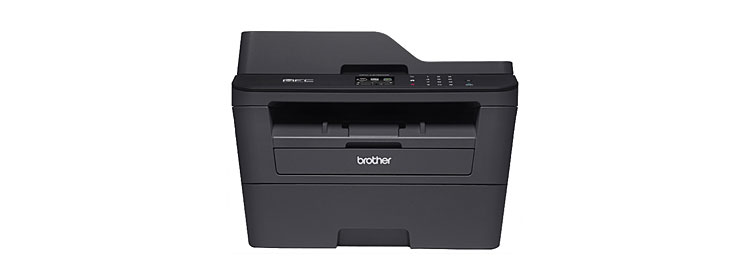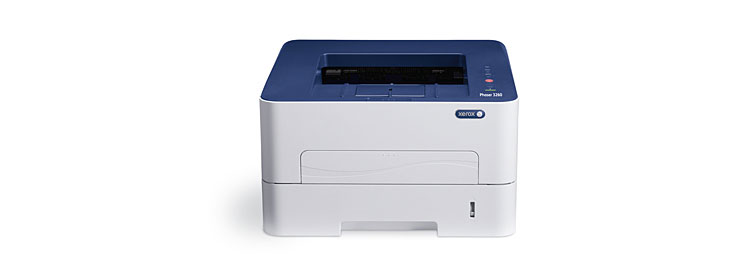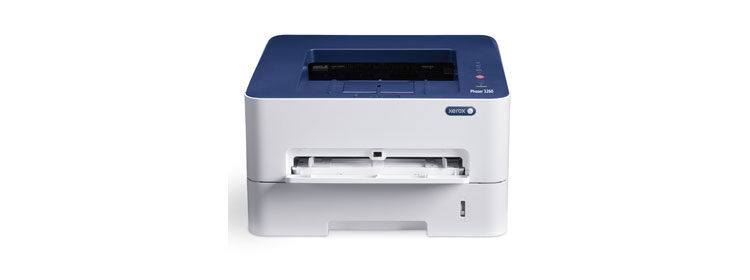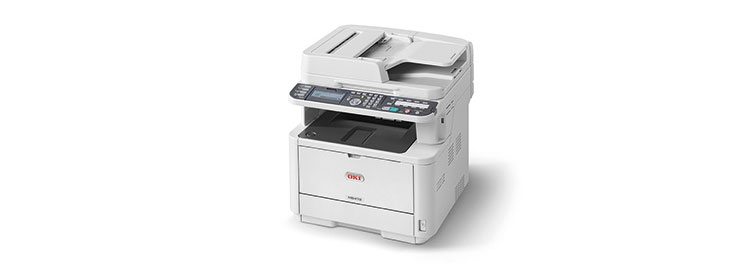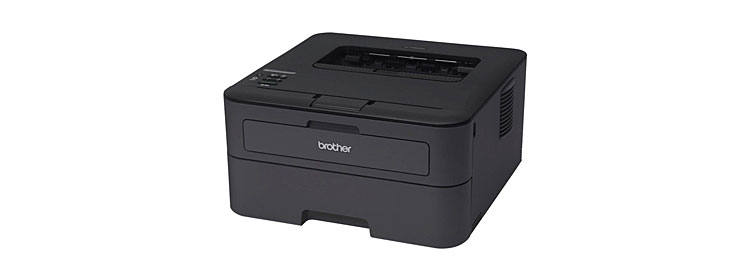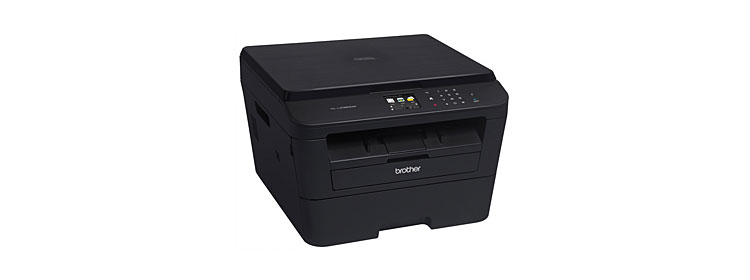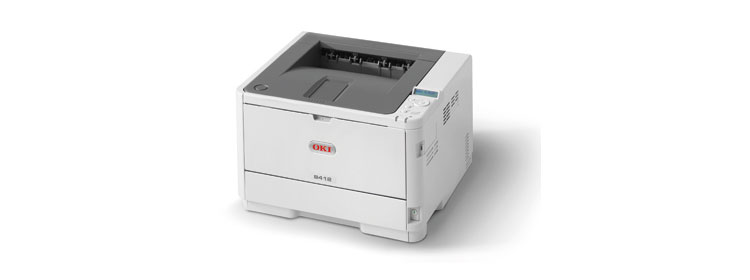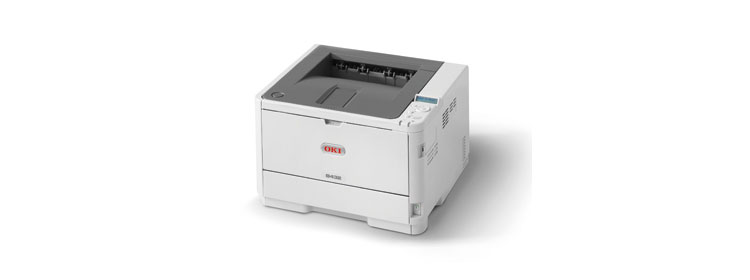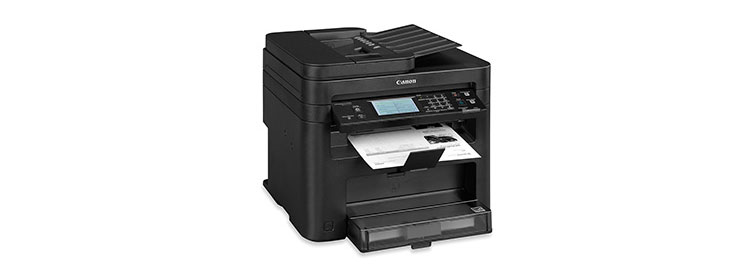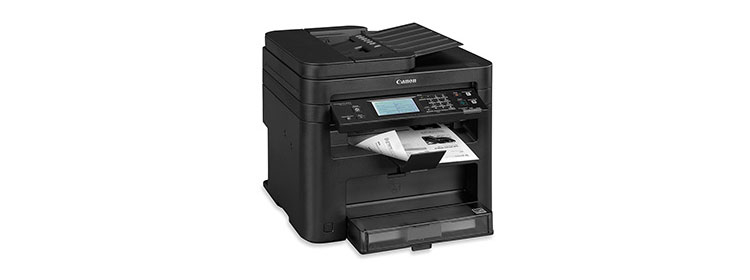Whether you need a monochrome laser multifunction printer (MFP) for personal or shared use, the Brother MFC-L2720DW ($249.99) can be a good fit, both literally and figuratively. It’s small enough so it won’t take up much room, and it delivers paper handling and speed suitable for up to moderate-duty use in a micro office. It doesn’t offer quite enough to make it our favorite in its category, but if your needs include Wi-Fi Direct support or the ability to scan to websites and email attachments without a computer, the MFC-L2720DW is worth serious consideration.
Compared with the Canon imageClass MF227dw$155.35 at Amazon, our Editors’ Choice heavy-duty personal or light- to moderate-duty monochrome laser MFP, the MFC-L2720DW$161.67 at Amazon is slower and delivers a touch lower text quality, although the quality is still good enough for most business use. On the other hand, it matches the Canon printer for paper handling, and it offers some features that the Canon printer lacks.
Among the MFC-L2720DW’s more notable extras are the ability to scan and send email directly without needing a PC, and support for Wi-Fi direct, which lets you connect to it from a mobile device even if the printer isn’t on a network. If you can make good use of these features, they can easily make up for the Canon printer’s advantages in text quality and speed.
Paper Handling, Basics, and Extras
As with the Canon MF227DW, the MFC-L2720DW’s suitability for use as a shared printer rests solidly on its paper handling. Both models offer a 250-sheet main tray, a single-sheet manual feed, and a duplexer (for two-sided printing). That should be enough for most micro offices, but if you need more, you’ll have to look elsewhere, since no paper handling upgrades are available in either case.
Both models also offer the same paper handling for scanning, each with a letter-size flatbed and a 35-sheet automatic document feeder (ADF) for up to legal-size paper. Neither ADF can scan or copy in duplex, however. If you need duplex scanning, the Brother MFC-L2740DW$189.99 at Amazon, which is similar to the MFC-L2720DW in most ways, adds duplexing, with its scanner able to scan both sides of the page at the same time.
Basic MFP features for the MFC-L2720DW include the ability to print and fax from, as well as scan to, a PC and the ability to work as a standalone copier and fax machine. Extras include its ability to send scans as email attachments without needing a PC, its support for mobile printing, and its Web-related features.
If you connect the printer to a network via Ethernet or Wi-Fi, you can connect through an access point on the network to print from and scan to a tablet or smartphone, as well as print though the cloud, assuming the printer is connected to the Internet. Connect to a single PC via USB cable instead, and you won’t be able to print through the cloud, but you can still connect directly to print or scan, thanks to the printer’s Wi-Fi Direct.
You can both print from and scan to a variety of websites (including Dropbox, Google Drive, Evernote, and OneDrive) using the 2.7-inch touch screen on the MFP’s front panel. You can also scan to a choice of file formats and save the file to a cloud site or send it as an email attachment without needing a computer. Even better, if you scan to Word, Excel, PowerPoint, or searchable PDF format, the printer will automatically use Brother’s servers in the cloud to recognize scanned text as part of the process, which is a particularly impressive feature that can come in handy
Setup, Speed, and Output Quality
Setup is typical for the breed. At 12.5 by 16.1 by 15.7 inches (HWD) and weighing 25 pounds 6 ounces, the MFC-L2720DW is light enough for one person to carry, and small enough so it won’t take up a lot of space. For my tests, I connected it using its Ethernet port and installed the software on a system running Windows Vista.
Brother rates the printer at 30 pages per minute (ppm), which is the speed you should see when printing text documents with little or no formatting. I timed it on our business applications suite (using QualityLogic’s hardware and software for timing) at 9.6ppm, which makes it essentially tied with the Brother MFC-L2740DW. However, it’s significantly slower than the Canon MF227dw’s 13ppm for printing in simplex (one-sided) mode, and its speed for simplex mode is effectively tied with the Canon’s 9.7ppm for printing in duplex.
The MFC-L2720DW’s output quality is good enough for most business needs, but not particularly impressive. Text is at the low end of the range that includes the vast majority of monochrome laser MFPs. That translates to being good enough for almost any business use, but well short of what you’d want for, say, high-quality desktop publishing.
Graphics output is a touch below par, making it easily good enough for any internal business use, but not something you’d want to hand out to a client or customer who you’re trying to impress with a sense of your professionalism. Photo quality is typical for a monochrome laser, making it good enough to print recognizable images from photos on webpages, but not suitable for anything more demanding than that.
If you need an MFP that can copy and scan in duplex, be sure to consider the Brother MFC-L2740DW or the Canon imageClass MF229dw$199.99 at Amazon, which is similar to the Canon MF227DW with a duplexing ADF added. If you don’t need to scan in duplex, take a look at the Canon MF227dw, which offers both faster speed and better text quality than the Brother MFC-L2720DW. However, if you can make good use of the Brother printer’s Wi-Fi Direct support, its ability to scan to Web sites and email attachments without a computer, or its ability to scan to specific file formats complete with text recognition, the MFC-L2720DW should be on your short list.
original article

